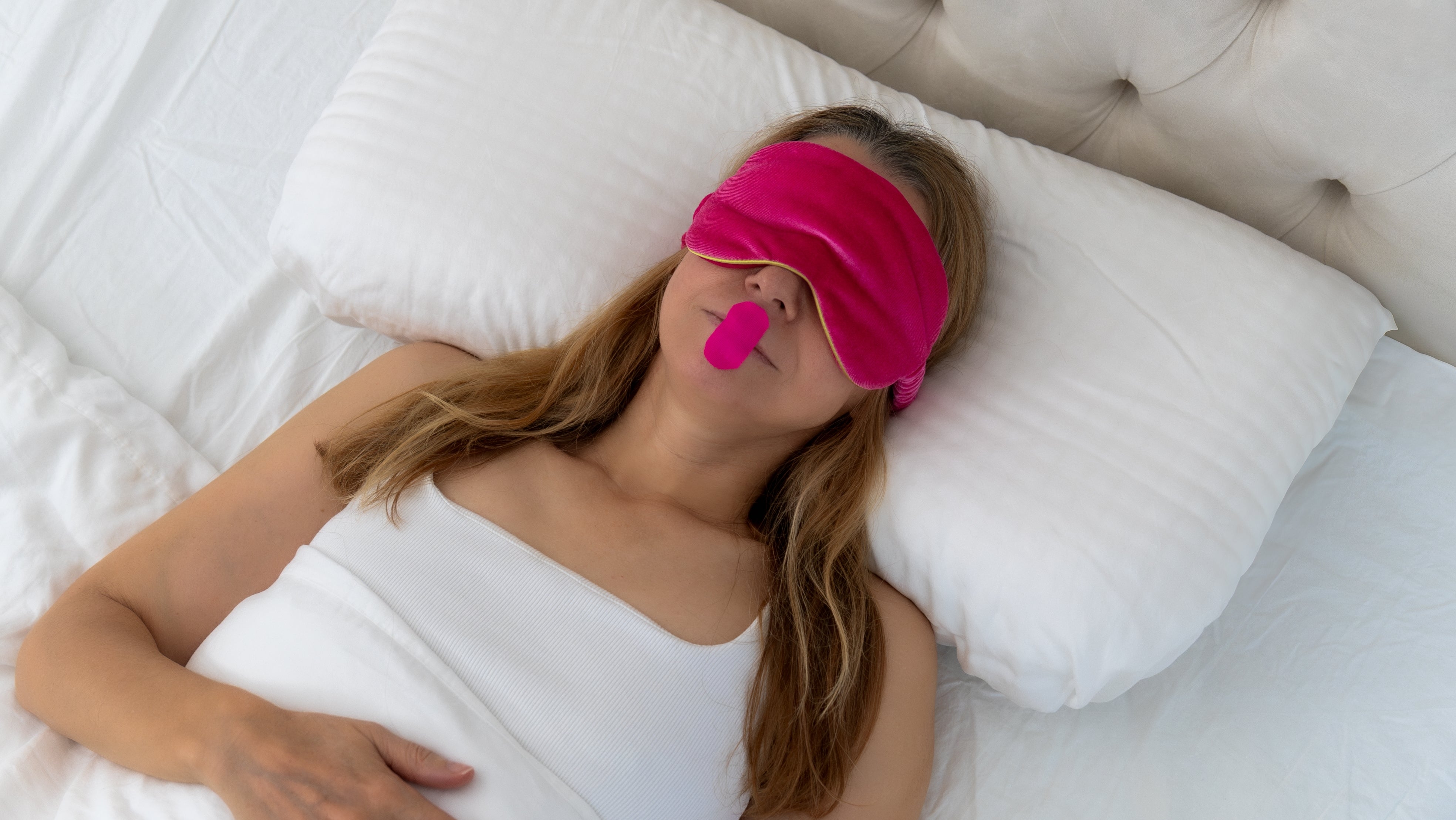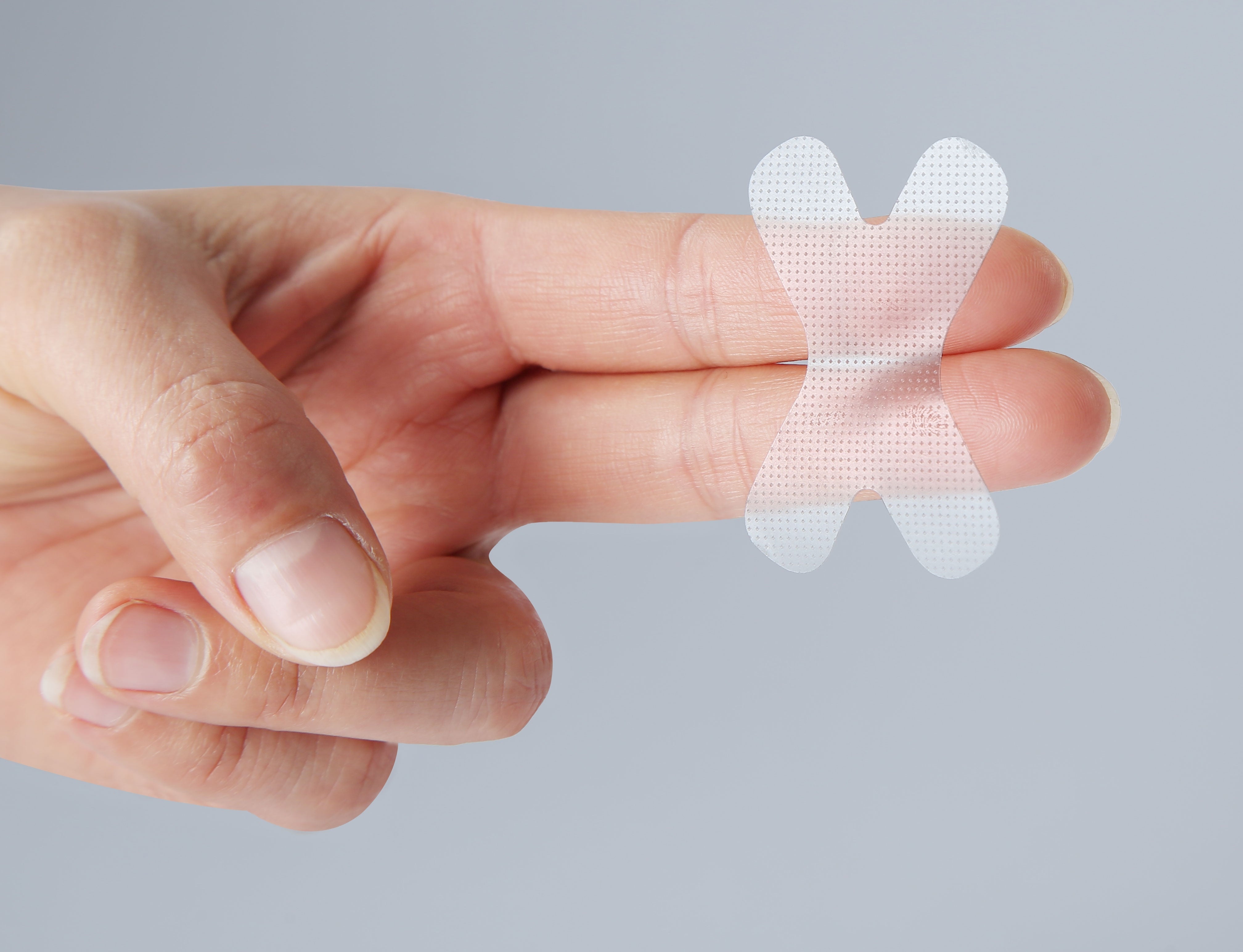
As a wellbeing editor, I’m all too familiar with mouth taping and the concept of nasal breathing as a way to optimise one’s health. But to be honest, mouth taping has never been something I’ve considered trying. While certain biohacks can be effective, the human body is clever and has evolved to keep us alive – it doesn’t actually need much help.
Unless you have a medical issue, you probably don’t need to optimise your breathing. At least, that’s what I thought until I read Breath by James Nestor. This book documented the evolution of the human jaw and respiratory system. It described the effects of variables such as a modern diet of soft processed food on the subsequent rise in mouth breathing.
The author met with experts and took part in experiments over several years to find out how and why we all started breathing through our mouths - and what this does to our health in the long term.
Some of the purported effects of long-term mouth breathing shocked me. Many seemed incredibly dramatic and, frankly, unlikely. It’s claimed that mouth breathing weakens facial structure, causes chronic fatigue, and even increases the risk of infections. So I – along with hordes of people who’ve watched TikTok videos on mouth breathing – began to wonder if my smooth jawbone and ever-present issues with tiredness might be down to how I breathe at night.
Nestor’s book was responsible for my interest in the health impacts of breathwork, vagus nerve stimulation and postural alignment. After reading it, I made it my mission to find out whether the points made in the book were legitimate. If they were, I was going to go out and buy some mouth tape.
Is breathing through your mouth bad for you?
I asked several breathwork experts about the book and they each agreed with several of the points made by Nestor. “Research that would suggest 30 to 35 per cent of people are falling into some sort of dysfunctional breathing, which is just any way of non optimal breathing or breathing in a way that isn't helping you,” explains breathwork expert Jamie Clements.
The health benefits of nasal breathing have been documented since at least the 15th century, when yogic texts described breathwork techniques known as pranayama. Many of these techniques are used by breathwork experts today, particularly alternate nostril breathing or “nadi shodhana” – which literally translates from Sanskrit as “channel cleaning”.

The claim is that nasal breathing is better for you than mouth breathing. The nasal passages act as a filter, preventing dust, pollen and other allergens from reaching your lungs. Breathing through the nose also encourages slower, deeper breaths, which can help regulate oxygen, nitric oxide and carbon dioxide levels in your body, helping with circulation and cognitive function. To force your body to breathe through your nose, therefore, you tape your mouth shut.
Read more: Do gummy supplements work, or do they represent the infantilisation of wellness?
That’s all fine, but I wanted to know for myself if this would actually make a difference. The tape I’d seen advertised on social media seemed very gimmicky. After all, do we really need more single-use products that pollute the environment? Do we need another product that lets us pretend that we’re taking care of ourselves?
When I asked Clements for his view on mouth taping, he explained that while the benefits are “legitimate and real”, he’s not as keen on the fact that one “can’t move for videos of mouth taping on Tiktok.”
“I've experienced the positive benefits of mouth taping,” he says. “But there are important medical concerns around pregnancy, around obesity, around sleep apnea and so on. But I always say if you are generally fit, healthy, and well, and you believe you breathe through your mouth during sleep, then it's actually a really accessible and effective intervention.”
Mouth taping – did it work?
Though I’ve attempted to train myself to breathe through my nose – and I think I’ve done a pretty good job – I know for a fact that when I’m asleep, I can’t do much to control my facial muscles, so I probably default to mouth breathing. I decided to take the plunge and see if mouth tape would change my life.
I wore my mouth tape every night for three weeks, and once I’d gotten over the guilt about single-use products going straight in the bin - and the cringe factor of becoming a “morning shed” person - I started to enjoy the process.
One thing I should note is that if you usually enjoy a nice chat with your partner before bed, put your tape on right before you go to sleep – otherwise, it’s game over. You can’t speak with the tape on.
The brand I tested offered green, vaguely lip-shaped stickers (£28, Mintier.com) that felt like fabric plasters. Latex-free and hypoallergenic, it felt very sticky on my skin. It’s a very strong adhesive - it was probably needed after I’d covered my face in serums and creams before bed - but I worried that I might block the pores around my mouth and end up breaking out. Fortunately, this didn’t happen.
Read more: Best electrolyte drinks and tablets to keep you hydrated, tested by our fitness editor
Some tape brands don’t include an emergency breathing hole in their designs, but Mintier does. This felt like a blessing and a curse. On one hand, I was happy to fall asleep knowing I had a failsafe in place should my nose become blocked. But on the other hand, I felt as though I could still breathe through my mouth and might unconsciously start doing so in the night.

I was also a little worried in the mornings that my dry lips would peel off with the tape, so I considered shelling out on the brand’s more expensive collagen-infused tape (£104, Mintier.com). Putting lip balm on before the standard tape meant that it didn’t stick properly, and going without it meant rolling the dice each morning, so I attempted to drink more water throughout the day to avoid dry-lip injuries.
These issues aside, the sensation of wearing the tape was actually quite nice. I was more mindful of my breathing and took slow, deep breaths before bed that I found soothing. I also noticed that my Oura ring reported fewer waking moments in the night, although my sleep score remained in the 70s and 80s rather than the 90s – which is always my goal. To be fair, these scores were likely down to busy days, later nights and a trip abroad, so I don’t think I can blame the mouth tape.
The verdict
I didn’t expect to see any changes to my jawline after three weeks. This was the one reported benefit of mouth taping that I felt was a reach. According to Nestor’s research, chronic mouth breathing can potentially affect facial structure over time. I think it’s a little foolish to jump to the conclusion that breathing through your mouth will, therefore, literally reshape your face. There were no changes to my face structure as I tested the tape.
Taping your mouth shut when you sleep won’t give you the “snatched jaw” of your dreams. However, I was pleasantly surprised by the effects. I felt more relaxed at bedtime, slept soundly and had a decent sleep score for the full testing period. There was nothing I seriously disliked about the tape, apart from the fact that it wasn’t recyclable.
There are plenty of celebrities and influencers who’ve jumped on the mouth taping trend – Gwyneth Paltrow and Tess Daly are fans, and plenty of people took to X to critique Ashton Hall’s bizarre morning routine, which, of course, included removing his mouth tape.
Unless you have a medical condition that affects your breathing, mouth tape is a perfectly viable sleep aid. You don’t need it, but it might help you to practice a more soothing form of deep breathing that could benefit your health long term.
I’m a fan of the practice and plan to keep taping my mouth, but I might opt for a more moisturising type of tape and potentially try a brand without a hole in the middle to further my research into the benefits.
Read more: I drank kefir for a month and it made me feel superhuman







